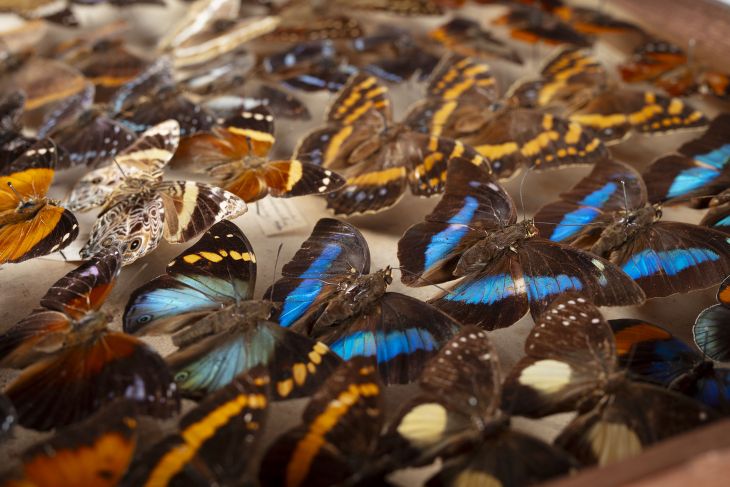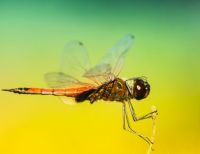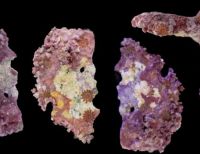
Dr Angel Viloria with specimens from the Chau Chak Wing museum's butterfly and moth collection.
Zoologist Angel Viloria has identified 260 type specimens in the museum’s 6,000-strong collection of moths and butterflies, one of the oldest in the world. Type specimens are those used in the original taxonomical descriptions of species. Once described, a type becomes the official standard representation of a species and informs the naming of that species.
A discovery of this magnitude in the 21st century is both “significant and extraordinary”, said Dr Viloria and places new import on the museum’s insect collection. He arrived at the museum in June as its visiting Macleay Miklouho Maclay Fellow, with the intention of determining whether the collection held three type specimens collected from the Americas. With the assistance of historical hand-painted illustrations dating back to the 1770s, he discovered a kaleidoscope (the collective noun for butterflies) of type specimens from Australia, the Americas, Asia, the Middle East and Africa. They include the common American Lady butterfly and a magnificent white Morpho butterfly whose wings reflect the light, both from the Americas.
Most of the type specimens identified by Dr Viloria were collected by renowned British entomologist Dru Drury (1724-1803). For centuries, the types were known only through hand painted lithographs commissioned by Drury and watercolours executed by collector William Jones. Taxonomist Johann Christian Fabricius’s description of many species was based on these illustrations; the physical specimens they were based on were assumed lost. By meticulously comparing details from historical illustrations and descriptions with real life specimens from the Chau Chak Wing Museum, Dr Viloria discovered far more types than initially anticipated.
















